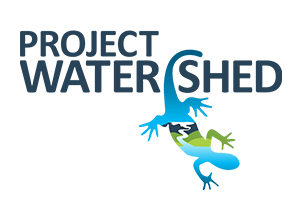Keeping It Living Field Trips
Depending on number of students they will be split into groups up to a minimum of four and a maximum of 17-18 students in each group. Each group will need to have at least 1 teacher and 1 parent accompany them. There will be up to four stations and the groups will rotate between them. Each station will have at least 2 station personnel. The four stations will be chosen from the following: planting, bird/fish monitoring, beach seining, plant identification, nature scavenger hunt, water quality monitoring, salt water wedge demonstration, fish traps, salmon and seal tag.
PLEASE NOTE: Project Watershed does not arrange for transportation to or from our field trip locations. Teachers can arrange a bus, parent drivers or take public transportation.
Contact
projectwatershed@gmail.com
250 703 2871
Map of location to be included with Stations and Washrooms highlighted
Possible Stations
Bird Monitoring
To be lead by a local naturalist. The students will count the number of birds by species at three locations (i.e. estuary, lagoon, river). List of birds and photos to be included and sent to teacher prior to field trip . At Kus-kus-sum and Holly hock flats we will compare and contrast the birds seen.
Native Plant Identification
To be lead by a local naturalist. Students to find two or three native species and draw identifying features – flower, bud, leaf, stem. Better for older students grades 4-7. List of native species with photos to be included and sent to teacher prior to field trip. At Kus-kus-sum and Holly hock flats we will compare and contrast the plants seen.
Fish Monitoring Beach Seine
To be lead by DFO Community Advisor (Dave Davies). Catch fish with seine nets, identify, count and record species. List of fish and photos to be included and sent to teacher prior to field trip (each location to have different list Airpark/Simms).
Fish Traps
Only at Airpark. There are 2 activities at this location. A) Is to look for and if time allows flag the remnant stakes on the mudflats B) is to build the wooden model and put fish in.
Fish Traps Pre-teaching and Lesson Materials
Planting
Either intertidal eelgrass, salt marsh or native planting. Depending on their age children may need a lot of assistance digging the holes for planting. Younger students to pair up with seniors or older students. Everything may not get planted and that is okay. Students should bring gloves if they have them. List of plants to be planted to be included and sent to teacher prior to field trip.
Salmon and Seal Tag
Only at Kus-kus-sum. A game of tag where most students are salmon and a few are seals. The game is played on a blue tarp to indicate a river and hoola hoops are used as habitat. The game is to be played in two parts – first with the hoola hoops to illustrate fish going through or by Holly Hock Marsh and after with no hoola hoops to illustrate the steel wall in front of Kus-kus-sum.
Saltwater Wedge Activity
Scavenger hunt/Naturists Walk
To be lead by a local naturalist. Students to check off items as they see them. Better for younger students grades 2/3.At Kus-kus-sum and Holly hock flats we will compare and contrast the items seen.
Story
Depending on the age of the children this could be used as a downtime station. Story to be read is “The Great Plastic Round Up”. The story will be read aloud and there is a follow up activity.
Water Quality Monitoring Actvity
Example Itenerary
| Time | Salmon v Seals | Naturalist Walk | Fish Traps |
| 9:15 – 9:30 | ———–Groups move to their Station———– | ||
| 9:30-10:00 | Group 1 | Group 2 | Group 3 |
| 10:00-10:05 | Move to next Station | ||
| 10:05-10:15 | Recess | ||
| 10:15-10:45 | Group 3 | Group 1 | Group 2 |
| 10:45-10:50 | Move to next Station | ||
| 10:50-11:20 | Group 2 | Group 3 | Group 1 |
| 11:20-11:30 | Move to trasportation/lunch | ||
| 11:30-12:00 | Lunch*optional | ||
Related Posts
Fall and Winter Forage Fish Sampling
We’re gearing up for the fall/winter season of forage fish sampling!
Mallard Creek Riparian Planting
We will be planting native riparian species along a section of Mallard Creek that we recently cleared of invasive Reed canarygrass.
Fall Planting at Kus-kus-sum
We are looking for volunteers to assist us with planting native trees, shrubs, and marsh plants at Kus-kus-sum this fall!
A New Day for Forage Fish
Project Watershed and the Coastal Forage Fish Network (CFFN) are celebrating Surf Smet Day on October 25th! This adds another day on which to celebrate and raise awareness about beach spawning forage fish as Pacific sand lance are celebrated on a day in December.
Fall Work at Kus-kus-sum
We are looking for volunteers to assist us with weeding out invasive plants to make room for the native plants arriving later this fall!
Forage Fish Survey Techniques Workshop
The Coastal Forage Fish Network (CFFN) is hosting two one-day workshops to introduce development considerations and methods to survey for beach spawning forage fish for projects that may impact beach spawning forage fish.


